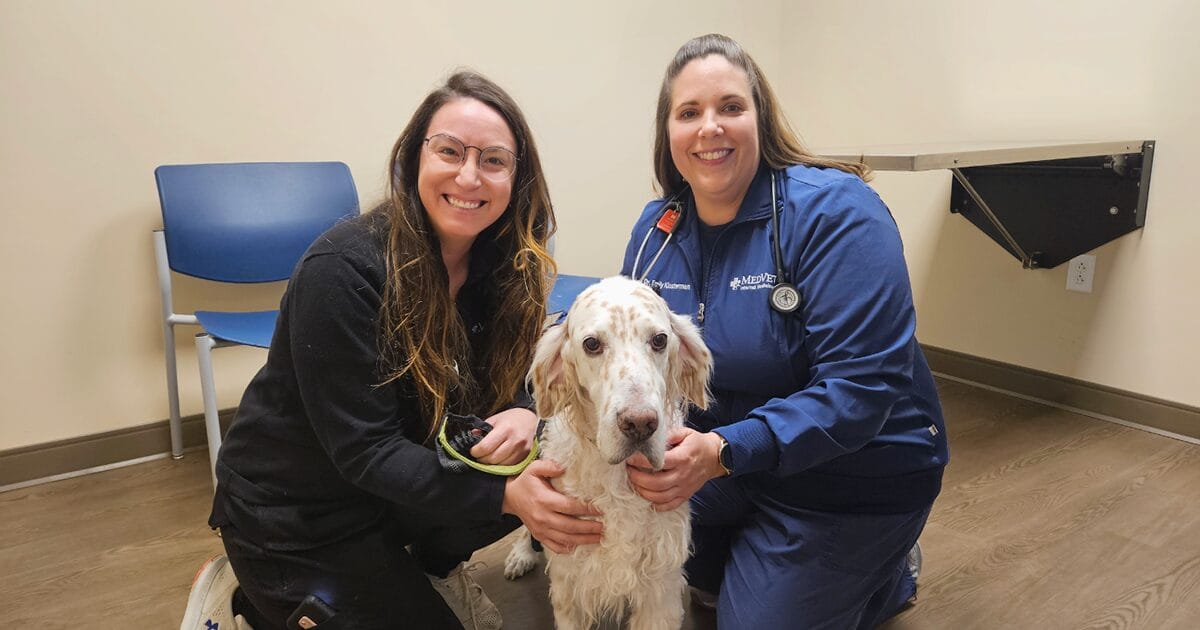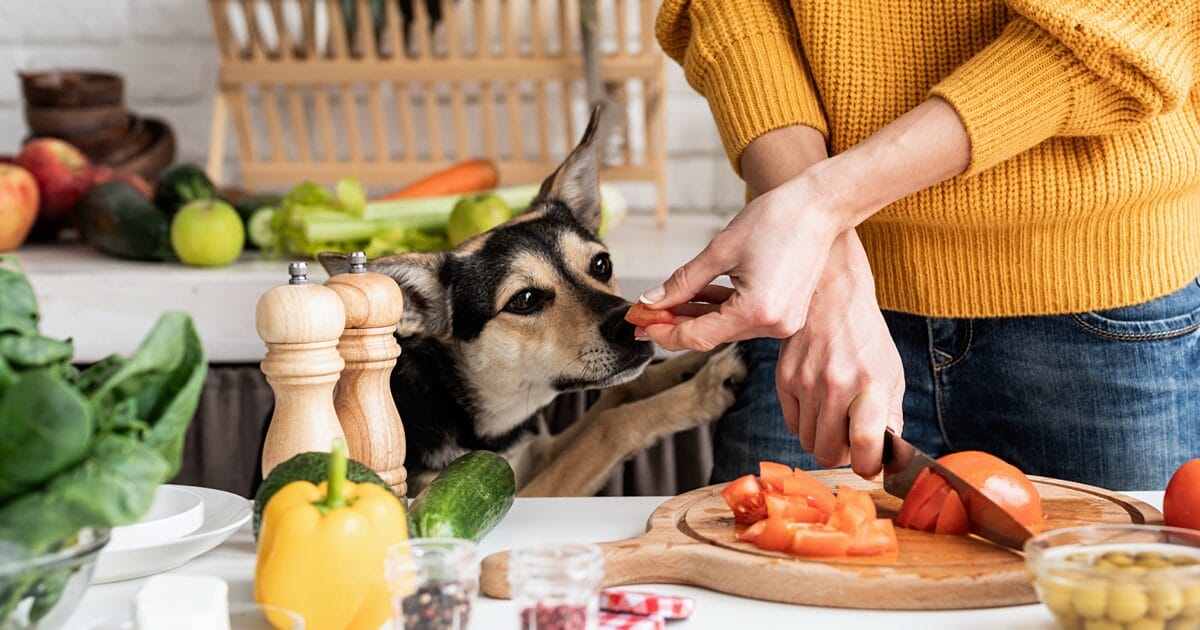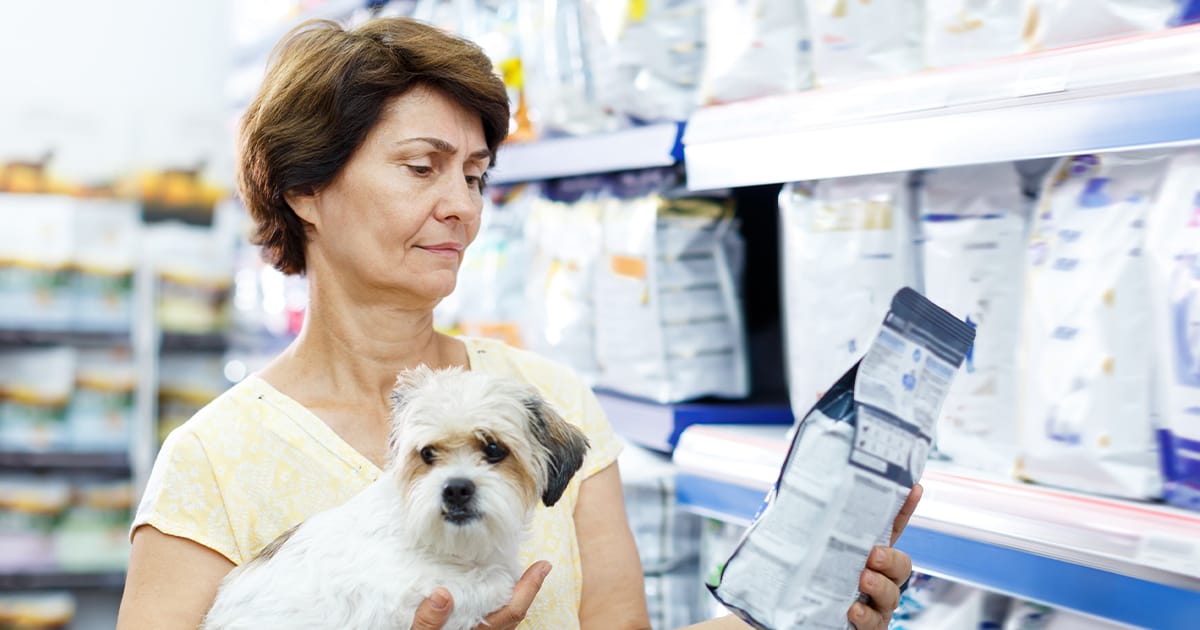Health Risks of Overweight Pets: Tips for Helping Your Obese Cat or Dog
Obesity is harmful to your pet’s health and quality of life. Learn if your pet is overweight and how to help.
Obesity in pets can lead to a variety of health issues, starting with a reduced quality of life. Overweight pets may tire quickly during activities they once enjoyed, and the strain of carrying extra weight can exacerbate more serious conditions. According to the Association for Pet Obesity Prevention, approximately 59% of dogs and 61% of cats are overweight. Our MedVet experts highlight the risks associated with excess weight in pets and provide tips on how you can help your feline and canine friends stay healthy.
Health Risks of Overweight Pets
Some of the risks associated with obesity in pets include:
- Osteoarthritis and orthopedic conditions: These can cause pain and mobility issues as excess weight on a cat or dog increases the stress on their bones and joints.
- Diabetes: Obese pets have an increased risk of developing diabetes as it may become harder for their body to regulate sugar levels.
- Kidney, heart, and respiratory diseases: These conditions can be more prevalent in overweight pets.
- Shorter life expectancy: Obesity can reduce your pet’s lifespan by up to 2.5 years.
How to Tell if Your Pet is Overweight
Evaluating your pet’s weight isn’t just about the number on the scale. It’s important to consider their overall body condition and body fat percentage. Here are three simple methods to visually assess your pet’s weight:
- Rib check: Run your fingers down your pet’s side. You should be able to feel each rib without pressing too hard.
- Top view: Look at your pet from above. You should see a noticeable waist behind the rib cage.
- Side view: Observe your pet from the side. The abdomen should tuck up behind the rib cage and not hang or sag below it.

Helping Your Pet Lose Weight
Fortunately, being overweight is a condition that can be treated. The key to healthy weight loss for your pet is to take it slow and steady. Rapid weight loss by drastically cutting back on your pet’s food can cause additional strain on their body. Your pet’s age and health may influence weight loss recommendations, but generally, pets should lose no more than 0.5-2% of their body weight per week.
Just like for humans, weight loss for pets is about balancing calorie intake with activity levels. What goes into your pet’s bowl is just as important as the amount of exercise they get.
Dietary Strategies for Healthy Pet Weight Loss
- Consult your veterinarian: The first step in helping your pet lose weight is to talk with your veterinarian. They will determine your pet’s caloric needs based on their age, body condition, and health status. Your veterinarian will also consider the specific nutrients your pet requires to lose weight while supporting their overall health.
- Read food labels: Once you know your pet’s caloric needs, read the food labels to find the correct amount of the brand you are using.
- Use a measuring cup: Always use a measuring cup to portion out your pet’s food. Guessing or eyeballing the amount can lead to overfeeding. If you switch to a different food, remember to adjust the portion size accordingly, as the calorie content can vary between brands.
- Avoid automatic feeders: Automatic feeders that continuously refill your pet’s bowl can lead to overeating. It’s like giving your pet access to an unlimited buffet, which is not conducive to weight loss.
- Count treats: Treats are part of your pet’s total calorie intake. If your veterinarian allows treats, leave some room in your pet’s diet for special rewards. Choose healthier treats and read their labels carefully. Some treats are healthier than others. You can also find non-food ways to reward your pet, such as extra playtime with a favorite toy or additional belly rubs.
- Resist guilt trips: If your pet tries to guilt you into giving them more food, stay strong! If Fido is sighing by his bowl, but you know he’s already been fed, ignore the big, sad eyes and redirect his attention to another activity.
- Skip table scraps: Sharing table scraps can be detrimental to your pet’s weight and sometimes even hazardous. Many human foods are not pet-friendly and can be high in calories. For example, a small piece of cheese can be equivalent to a whole meal for a dog or cat. Instead, ask your veterinarian for healthy alternatives. Some pet-safe options include green beans, carrots, ice cubes, whole grain cereal, and plain rice cakes.
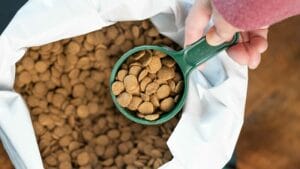
Boost Your Pet’s Weight Loss with These Effective Exercises
It’s time to get your pet moving. Consistent, daily activity is key to their weight loss journey.
- Walking: Start with short walks and gradually increase the duration. Consult with your veterinarian to determine the best exercise plan based on your pet’s starting weight and health. Set a goal to take walks for exercise, not just for sniffing and strolling. An exercise walk is not the time to stop and smell the flowers. Begin your walk at a steady pace that your pet can handle and allow them to explore and sniff on the way back home.
- Engage your pet in play: For dogs, a game of fetch or finding a toy they enjoy can be highly effective. Cats, on the other hand, don’t need long periods of exercise but can benefit from short bursts of activity. Tap into their predator instinct by offering a variety of toys. Be sure to mix it up, as something that is interesting today might be old news tomorrow.
- Keep your pet guessing: Creative ideas like hiding small, low-calorie treats or using toys that dispense part of their meal can help increase their activity levels.
- Consider working with a rehabilitation specialist: A certified rehabilitation therapist or practitioner can develop an individualized plan based on your pet’s nutrition and exercise needs. They can also help rule out any underlying medical conditions that could be causing your pet’s weight gain.
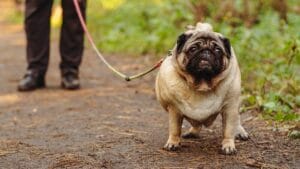
With the support of your veterinary team, careful feedings, and consistent exercise, your pet can reach their recommended weight and significantly reduce the risks to their health and wellbeing.
Visit our Pet Care Resources library for more pet health and safety information.
FAQs
Learn More
For ways to ensure your pet lives a happier, healthier life, visit our Pet Care Resources library.
Pet Care ResourcesContents
Learn More
For ways to ensure your pet lives a happier, healthier life, visit our Pet Care Resources library.
Pet Care Resources